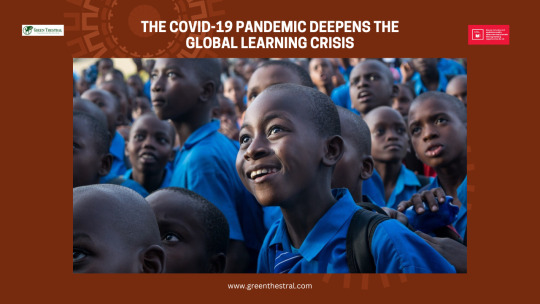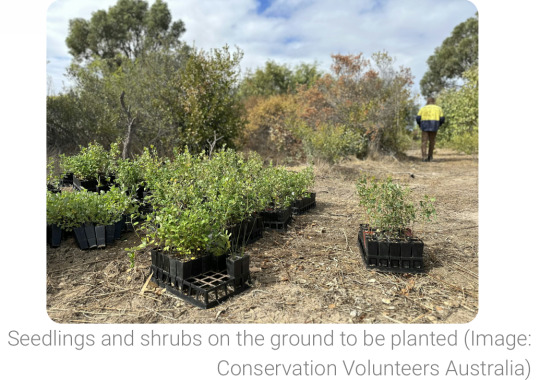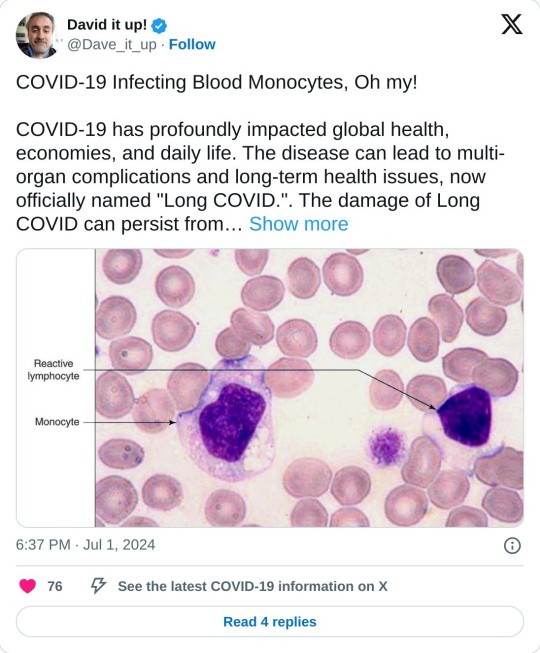#Impact of COVID-19 on global health
Explore tagged Tumblr posts
Text
वेलबिंग इन स्कूल्स स्पॉटलाइट 2024 के निर्धारण में महत्वपूर्ण भूमिका निभाने पर हंड्रेड द्वारा सम्मानित हुए बागपत के अमन
बागपत के युवा अमन कुमार को फिनलैंड के हंड्रेड संस्थान द्वारा “वेलबिंग इन स्कूल्स स्पॉटलाइट 2024” में उनके योगदान के लिए सम्मानित किया गया है। इसका उद्देश्य स्कूलों में विद्यार्थियों की भलाई को बढ़ावा देने वाले प्रभावी और स्केलेबल नवाचारों की पहचान करना है, जिसमें अमन ने हंड्रेड के एडवाइजरी बोर्ड के सदस्य के रूप में नवाचारों की समीक्षा में महत्वपूर्ण भूमिका निभाई। इस महत्वपूर्ण योगदान के लिए…
#Aman Kumar from Bagpat#Effective and scalable innovations#How innovations are identified#How to bring positive change in education#Impact of COVID-19 on global health#Integration of student wellbeing in educational structures#Member of HundrED Advisory Board#Need for wellness programs#Objective of HundrED#Process of selecting innovations#Role of HundrED in student wellbeing#What is HundrED#What is Wellbeing in Schools Spotlight#Why Aman Kumar is awarded#अमन कुमार को क्यों सम्मानित किया गया#चयनित नवाचारों की प्रक्रिया#नवाचारों की पहचान कैसे की गई#प्रभावी और स्केलेबल नवाचार#बागपत के अमन कुमार#विद्यार्थियों की भलाई में हंड्रेड की भूमिका#वेलनेस कार्यक्रमों की आवश्यकता#वेलबिंग इन स्कूल्स स्पॉटलाइट क्या है#वैश्विक स्वास्थ्य पर कोविड-19 का प्रभाव#शिक्षा में सकारात्मक बदलाव कैसे लाए#शैक्षिक संरचनाओं में विद्यार्थियों की भलाई का एकीकरण#हंड्रेड का उद्देश्य#हंड्रेड के एडवाइजरी बोर्ड के सदस्य#हंड्रेड क्या है
0 notes
Text
The Best Multivitamin Ingredients for Immune Protection and Good Health
#Prior to the onset of the Covid-19 crisis#consumers had already grown increasingly mindful of the impact of nutrition on their health. The pandemic has turbo-charged this trend#as protection from infection and illness has rapidly become a year-round concern rather than a seasonal one. As a result#the 2020 global dietary supplements market size of USD 140.3 billion was projected to expand at a compound annual growth rate (CAGR) of 8.6#according to a report by Grand View Research.
0 notes
Text
COVID-19 Pandemic: Unraveling the Global Learning Crisis

The COVID-19 pandemic has left an indelible mark on the world, disrupting economies, healthcare systems, and everyday life. One of the most significant areas affected by this unprecedented global crisis is education. With schools closing their doors to prevent the spread of the virus, the world has witnessed the deepening of a global learning crisis. The pandemic's impact on education has been profound, exacerbating existing inequalities and creating new challenges for learners, educators, and policymakers worldwide. In this article, we will delve into the ways the COVID-19 pandemic has intensified the global learning crisis and explore potential strategies to address these pressing issues.
The Disruption of Education During the Pandemic
When the World Health Organization (WHO) declared COVID-19 a pandemic in early 2020, governments worldwide swiftly implemented strict measures to curb the virus's spread. One of the most crucial measures was the closure of educational institutions. Overnight, classrooms turned into virtual learning environments, and educators had to adapt rapidly to online teaching methods.
While some countries were better equipped to transition to online education, others faced significant challenges due to a lack of infrastructure and access to technology. The digital divide became more pronounced as students from low-income families or remote regions struggled to keep up with their studies. As a result, millions of children and young adults were left without access to education, further exacerbating the global learning crisis.
Widening Educational Inequalities
The pandemic has widened existing educational inequalities worldwide. Students from privileged backgrounds with access to reliable internet connections, laptops, and private tutors were better equipped to continue their education remotely. On the other hand, students from marginalized communities often lacked the necessary resources to participate in online learning effectively.
Furthermore, learners with disabilities faced additional barriers, as many online platforms were not designed to accommodate their specific needs. This disparity in access to quality education has the potential to have far-reaching consequences, as it perpetuates social and economic inequalities for generations to come.
Learning Loss and the Educational Gap
Extended school closures and disrupted learning routines have resulted in significant learning loss for many students. Studies have shown that prolonged absences from the traditional classroom setting can lead to a decline in academic performance and cognitive development.
Moreover, the pandemic has created an educational gap between different age groups. Early childhood education, a critical developmental phase, has been severely impacted, potentially affecting children's long-term cognitive and social-emotional development. Similarly, older students faced the stress of delayed examinations, college admissions, and uncertainty about their future prospects.
Mental Health Impact on Students and Educators
The pandemic's toll on mental health has been considerable, impacting both students and educators. The abrupt shift to remote learning and the uncertainties surrounding the pandemic have caused stress, anxiety, and feelings of isolation among students. Many have struggled to cope with the challenges of online learning and the absence of social interactions with peers.
Educators, too, have faced unprecedented pressures, adapting to new teaching methods, dealing with technological challenges, and juggling personal responsibilities amidst the pandemic. The resulting burnout and fatigue among teachers have affected the overall quality of education and student support.
Solutions to Mitigate the Global Learning Crisis
While the COVID-19 pandemic has undoubtedly exacerbated the global learning crisis, there are several strategies that policymakers, educators, and communities can adopt to address these challenges and build a more resilient education system:
1. Bridging the Digital Divide
Governments and educational institutions must prioritize bridging the digital divide to ensure all students have equal access to quality education. This can be achieved through initiatives that provide laptops, tablets, or internet connectivity to students from disadvantaged backgrounds. Additionally, investing in the development of educational content optimized for low-tech devices can increase accessibility for students with limited resources.
2. Blended Learning Approaches
Blended learning, a combination of online and in-person instruction, can offer a flexible and inclusive approach to education. This approach allows for personalized learning experiences while maintaining the benefits of face-to-face interactions with teachers and peers. By incorporating digital tools and resources into the curriculum, educators can cater to diverse learning styles and individual needs.
3. Teacher Training and Professional Development
Empowering teachers with the necessary skills and tools to adapt to changing circumstances is crucial. Comprehensive training in online teaching methodologies and the use of technology in education can enhance the quality of remote learning. Moreover, providing ongoing professional development opportunities can help teachers stay motivated and engaged, ultimately benefiting their students' learning outcomes.
4. Prioritizing Early Childhood Education
Recognizing the significance of early childhood education, governments should prioritize resources for early learning programs. Investing in early childhood education can have a profound impact on children's cognitive and social development, setting them on a path to success in later years.
5. Strengthening Support Systems
To address the mental health challenges faced by students and educators, it is essential to establish robust support systems within educational institutions. Counseling services, peer support groups, and mental health awareness programs can create a nurturing and empathetic learning environment.
Conclusion
The COVID-19 pandemic has indeed deepened a global learning crisis, affecting millions of learners around the world. The disruption of education, widening educational inequalities, learning loss, and the mental health impact on students and educators have posed significant challenges to the education sector.
However, by implementing innovative strategies such as bridging the digital divide, adopting blended learning approaches, prioritizing teacher training, investing in early childhood education, and strengthening support systems, we can begin to mitigate the adverse effects of the pandemic on education.
As we navigate the path to recovery, it is vital for governments, educators, parents, and communities to come together and work collaboratively towards building a more resilient and inclusive education system that can withstand future challenges. Only through collective efforts can we ensure that every child has access to a quality education, regardless of the circumstances they may face. Let us seize this opportunity to reshape education for a brighter and more equitable future.
What's In It For Me? (WIIFM)
In this blog article on the COVID-19 pandemic's impact on education, you will gain a comprehensive understanding of how the global learning crisis has deepened in the wake of this unprecedented health crisis. Discover the challenges faced by students, educators, and policymakers, and explore effective strategies to address these issues. Learn about the widening educational inequalities, learning loss, and the mental health impact on learners and teachers. Moreover, find practical solutions and actionable steps to contribute to building a more resilient and inclusive education system for a brighter future.
Call to Action (CTA)
Join us in addressing the global learning crisis deepened by the COVID-19 pandemic. Share this article with your friends, family, and colleagues to spread awareness about the challenges faced by learners and educators worldwide. Engage in discussions about the importance of equitable access to quality education and the need for innovative solutions. Support initiatives that bridge the digital divide, prioritize early childhood education, and promote teacher training and professional development. Together, let's work towards building a stronger and more sustainable education system that can withstand future challenges.
Blog Excerpt
The COVID-19 pandemic has had a profound impact on education globally, deepening a pre-existing learning crisis. With schools closing their doors to curb the virus's spread, millions of students were left without access to education, exacerbating existing educational inequalities. This blog article delves into the far-reaching consequences of the pandemic on learners, educators, and communities. Discover how the sudden shift to remote learning widened the educational gap and led to learning loss among students. Uncover the mental health challenges faced by learners and teachers during these uncertain times. But, more importantly, explore actionable solutions to mitigate the global learning crisis and build a more resilient and inclusive education system.
Meta Description (320 characters)
Discover how the COVID-19 pandemic has deepened the global learning crisis. Explore its impact on education, widening inequalities, learning loss, and mental health challenges. Learn actionable strategies to address these issues and build a more resilient education system. Join us in shaping a brighter future.
#COVID-19 pandemic and education crisis#Impact of COVID-19 on global education#Challenges in remote learning during pandemic#Educational inequalities deepened by COVID-19#Learning loss due to school closures#Mental health impact on students and teachers#Solutions for the global learning crisis#Bridging the digital divide in education#Blended learning during COVID-19#Teacher training for online education#Early childhood education importance#Coping with remote learning challenges#Supporting students' mental health#Inclusive education post-pandemic#Rethinking education post-COVID-19#Resilient education systems for the future#Equity in online learning resources#Adapting curriculum for remote education#Parental involvement in virtual learning#Online education and socio-economic disparities#Government policies for education post-pandemic#Building community support for learners#Impact of the pandemic on higher education#Addressing the digital divide in rural areas#The role of technology in pandemic education#Redefining the role of educators during COVID-19#Promoting student engagement in virtual classrooms#Innovations in teaching methods post-pandemic#Fostering creativity and critical thinking in online education#Collaborative learning in a virtual environment
0 notes
Text
What has Philanthrocapitalism ever done for us?
I've been working on this a while and may update this as things become clearer
Here is a series of events, which lead up to and surround the coronavirus pandemic, which have far reaching impacts on the stock exchange, personal wealth, corporate practice, governments, media and global health and well being. The positive impacts of the money, time and effort are difficult to find, unlike the harms. There isn’t an easy to find paper trail or outcome from actions taken and…
View On WordPress
#accountability#climate change#communication#conflict of interest#COVID-19#diversity#Gates Foundation#global health#impact investing#lobbying#paper trail#politics#priorities#transparency
0 notes
Note
You're becoming oddly ableist.
Talking about medical reality isn't ableism
One of the most striking findings was that post-COVID deficits in hospitalized patients look similar to 20 years of normal aging. The team also found that people who had been hospitalized with COVID had reduced brain volume in key areas and abnormally high levels of brain injury proteins in their blood.
Our findings indicate that COVID-19 is associated with molecular signatures of brain aging and emphasize the value of neurological follow-up in recovered individuals.
The pandemic has highlighted the complex interplay between viral infection, immune aging, and brain health, that can potentially accelerate neuroimmune aging and contribute to the persistence of long COVID conditions. By inducing chronic inflammation, immunosenescence, and neuroinflammation, COVID-19 may exacerbate the processes of neuroimmune aging, leading to increased risks of cognitive decline, neurodegenerative diseases, and impaired immune function. Key factors include chronic immune dysregulation, oxidative stress, neuroinflammation, and the disruption of cellular processes. These overlapping mechanisms between aging and COVID-19 illustrate how the virus can induce and accelerate aging-related processes, leading to an increased risk of neurodegenerative diseases and other age-related conditions.
"COVID-19-induced microhemorrhagic lesions may exacerbate DNA damage in affected brain cells, resulting in neuronal senescence and activation of cell death mechanisms, which ultimately impact brain microstructure-vasculature," says Dr. Muralidhar L. Hegde, Ph.D., a professor of neurosurgery at Houston Methodist and a corresponding author of the review. "These pathological phenomena resemble hallmarks of neurodegenerative conditions like Alzheimer's and Parkinson's diseases and are likely to aggravate advanced-stage dementia, as well as cognitive and motor deficits."
Covid results in brain damage. Brain damage results in shifts in behavior and/or personality. This is something that must be discussed.
Signed,
Someone who experienced life-altering brain damage three times as a teenager
264 notes
·
View notes
Text
Good News - May 15-21
Like these weekly compilations? Support me on Ko-fi! Also, if you tip me on Ko-fi, at the end of the month I'll send you a link to all of the articles I found but didn't use each week - almost double the content!
1. Translocation of 2,000 rhinos in Africa gets underway in “one of the most audacious conservation efforts of modern times”

“The 2,000 rhinos - more than are currently found in any single wild location in Africa - represent around 12-15% of the continent’s remaining white rhino population. […] “Rhinos perform an important ecological function in the environment as a large grazing herbivore,” says Dale Wepener[….] “The protection of rhino is far more than just looking after rhino; other species that occur in the protected areas will benefit from the protection,” explains Jooste. “This will lead to an increase in diversity and result in much healthier ecosystems.”
2. Florida Corridor Buffers Effects of Climate Change on Wildlife — And People

“A massive multi-partner effort that has conserved 10 million acres for wildlife in Florida over past decades will help buffer wildlife—and people—from the effects of climate change, a new report says. […] Protecting these corridors is important for wildlife genetics, demography and connectivity […], conducting prescribed fires in the corridor can reduce the risk of more intense wildfires [… and] they can provide buffers against hurricanes and seasonal thunderstorms.”
3. Global life expectancy to increase by nearly 5 years by 2050 despite geopolitical, metabolic, and environmental threats
“Increases are expected to be largest in countries where life expectancy is lower, contributing to a convergence of increased life expectancy across geographies. The trend is largely driven by public health measures that have prevented and improved survival rates from cardiovascular diseases, COVID-19, and a range of communicable, maternal, neonatal, and nutritional diseases (CMNNs).”
4. Valencia has Spain’s longest urban park

“Jardin del Turia (Turia Garden) is the green spine of the City of Valencia and Spain’s (and possibly Europe’s) longest urban park stretching for a length of 8.5 kilometres [… and] the current administration plans to make Jardin del Turia Europe’s largest city green space by extending it to the sea[….] Almost all Valencia residents (97 per cent) live within 300 metres of an urban green space. […] Jardin del Turia is a true urban oasis that provides exceptional thermal comfort, with a temperature difference of up to three degrees compared to other areas of the city.”
5. This Paint Could Clean Both Itself and the Air
“When an artificial ultraviolet light source shines on [photocatalytic] paint, the nanoparticles react with pollutants to make them break down—theoretically removing them from the nearby air and preventing a discoloring buildup. [… R]esearchers developed a new photocatalytic paint that they claim works using UV rays from ordinary sunlight, making its self-cleaning properties easier to activate. They’ve also shown that they can effectively produce this paint from recycled materials [including fallen leaves].”
6. Planting Seedlings for a Cooler Rockingham

“A dedicated group of volunteers recently planted over a thousand native seedlings in Lewington Reserve [… and] re-established canopy cover to areas of the reserve to create cooling shade for the local community and provide homes for native wildlife. […] Planting lots of trees and shrubs in urban areas can help create shade and cool cities, mitigating the impacts of climate change, contributing to biodiversity conservation and building greener, more resilient communities.”
7. Sydney’s first dedicated affordable housing for trans women designed to deliver ‘positive outcomes’

“Community housing provider and charity Common Equity NSW, […] which is for people on very low to moderate incomes, prides itself on creating inclusive living and promotes the independence and well-being of people and communities […, and] will deliver the first-of-its-kind social housing in a bid to provide a safe place to live for transgender women seeking an affordable home.”
8. Rewilding: How a herd of bison reintroduced to Romania is helping ‘supercharge’ carbon removal

“170 European Bison reintroduced to Romania’s Țarcu mountains could help capture and store the carbon released by up to 84,000 average US petrol cars each year. […] By grazing a 48 square kilometre area of grassland in a wider landscape of 300 kilometres squared, they helped to capture an additional 54,000 tonnes of carbon each year. That is around 10 times the amount that would be captured by the ecosystem without the bison.”
9. World’s biggest grids could be powered by renewables, with little or no storage

“[…] 100% renewable supply can then match the load by putting surplus electricity into two kinds of distributed storage worth that [an energy expert] says are worth buying anyway – ice-storage air-conditioning and smart bidirectional charging of electric cars, and recover that energy when needed, filling the last gaps with unobtrusively flexible demand.”
10. Supporting the Long-Term Survival of Copper River Salmon and Alaska Native Traditions

“With $4.3 million in NOAA funds, the Copper River Watershed Project and The Eyak Corporation will remove fish passage barriers, opening more streams for salmon spawning and subsistence fishing. [… As part of this effort, o]ld narrow culverts that constrict water flow will be replaced with “stream simulation” culverts wide enough to fit the full stream, including its banks. They are also deep to allow contractors to place stones and other material inside to mimic a natural stream bottom.”
May 8-14 news here | (all credit for images and written material can be found at the source linked; I don’t claim credit for anything but curating.)
#hopepunk#good news#rhino#white rhino#africa#conservation#rewilding#climate change#florida#wildlife#life expectancy#health#spain#green space#urban parks#recycling#trees#global warming#trans#affordable housing#australia#bison#romania#carbon#carbon capture#renewableenergy#reforestation#salmon#alaska native#nature
390 notes
·
View notes
Text
This Week in Covid & Health News (Posted November 14, 2024)
Covid-Safe Cosplay and its admin are unaffiliated with any of the sites or authors linked below, we're simply sharing the information. If you have related news links that we missed, especially in other languages, please share either in the comments or a reblog.
General
San Fransisco Chronicle: Sonoma County reinstates mask mandate for health care workers amid rising illnesses (Nov. 12, 2024)
NPR: What happens when a vaccine skeptic leads health policy? Ask Florida (Nov. 13, 2024)
Covid-19
The Beacon: Weathered COVID before? Scientists say every new infection puts you at risk of getting long COVID (Nov. 11, 2024)
CIDRAP: Cardiac inflammation markers show role of long-COVID symptoms (Nov. 12, 2024)
Cleveland: Having COVID-19 doubles long-term risk of heart attack, stroke, new Clinic study suggests (Nov. 13, 2024)
Avian Flu
Hawaii News Now: Avian flu detected on Oahu for the first time ever (Nov. 12, 2024)
CNN: Canadian teen in critical condition with bird flu; source of exposure is unknown (Nov. 13, 2024)
Global News: As bird flu emerges in Canada, experts urge preparedness (Nov. 13, 2024)
Stat: Canadian teen's bird flu infection is not the version found in cows (Nov. 13, 2024)
Fortune: Canadian teenager in critical condition with presumptive bird flu as U.S. official warns the virus 'seems to be gearing up for wider impact' (Nov. 13, 2024)
TIME: Is It Time to Worry About Bird Flu? (Nov. 13, 2024)
Whooping Cough
WPRI: 4 Portsmouth High School students have 'very contagious' whooping cough (Nov. 12, 2024)
ABC News: Washington state sees 'sharp increase' in whooping cough cases, mirroring rise across US (Nov. 12, 2024)
KHOU: Whooping cough cases surge in Texas, across country in 2024, DSHS says (Nov. 12, 2024)
KOIN: Whooping cough, chickenpox outbreaks hit Clark County schools (Nov. 12, 2024)
The Spokesman-Review: Six Spokane County residents hospitalized with whooping cough during outbreak (Nov. 12, 2024)
Fox KTVU: Bay Area surge in whooping cough; some counties see highest numbers in decade (Nov. 13, 2024)
CNY Central: Health officials warn of increased whooping cough spread in local schools (Nov. 14, 2024)
Walking Pneumonia
CDC: Mycoplasma Pneumoniae Infections Have Been Increasing (Oct. 18, 2024)
WTOP: Urgent care centers report 'unprecedented' spike in walking pneumonia cases around DC area (Nov. 14, 2024)
104 notes
·
View notes
Text
Simon Williams for Time:
It’s hard to believe it's been five years since the start of the COVID-19 pandemic. Since 2020, the disease has killed more than 1.2 million Americans—more than in any other country. That accounts for more than 1 in 7 reported COVID-19 deaths in the whole world (although the true global death toll is likely much higher due to under-reporting). Don’t be fooled by some social-media revisionist historians who would have us believe that COVID-19 was “mild”—it was one of the most lethal infectious disease outbreaks in human history, ranking only behind the 1918 Spanish Flu and the Bubonic Plague (not including the ongoing HIV/AIDS epidemic). Advertisement Thankfully, in 2025, the days of lockdowns and quarantines now seem a distant memory for many—even though the physical, mental, and emotional impacts of the pandemic persist in many ways. However, the question remains: Are we better prepared for next time? Sadly, if anything, we are less prepared than before.
Pandemics are not necessarily once-in-a-lifetime events. We already saw in 2009 a swine flu pandemic that killed up to half a million people globally. H5N1 bird flu continues to spread in poultry, wild birds, and mammals in the U.S., with each case increasing the risk of further spillover into humans—making the U.S. a possible epicenter of any new flu pandemic, should the virus evolve further to spread easily among humans. MPox, MERS (another coronavirus with a high fatality rate), and Ebola are just some of the currently circulating pathogens with pandemic potential. And, of course, "Disease X" (a potential virus that could emerge in the future that we don't yet know about) is always a possibility.
What should we be doing that we’re not? First, we should be making investments, not cuts, in pandemic preparedness. The U.S. has withdrawn funding from the World Health Organization. Working alongside local and national health authorities, the WHO is a key “first responder,” identifying and containing infectious-disease outbreaks before they spread. The U.S. contributed approximately $120 million in 2023-2024 on responding to acute health emergencies and to preventing pandemics and epidemics, so our step back leaves a massive hole in resources designed to tackle emergencies and stop outbreaks from spreading. Also, recent funding cuts or freezes to agencies like USAID are already having ramifications on the ground, with public-health professionals concerned that progress in tackling diseases like tuberculosis will stall or regress. With less funding, pandemic preparations also slow down, and the U.S. ceasing negotiations for the Pandemic Agreement and amendments to the International Health Regulations makes matters worse.
5 years ago this week, COVID mitigation measures started to be implemented in various aspects of our lives.
On March 11th, 2020, the World Health Organization (WHO) officially declared COVID-19 a pandemic. On that same evening, multiple COVID-related news items broke out, including the positive COVID test of Tom Hanks, the NBA suspending its season due to Rudy Gobert’s positive COVID test, and Donald Trump announcing a travel ban from EU countries.
47 notes
·
View notes
Text
Our reliance on comfort-driven technologies has created a fragile foundation, leaving us ill-equipped to navigate life without them.
Despite being more digitally connected than ever, we are lonelier, more anxious, and increasingly overwhelmed. Anxiety rates surged by 25% globally due to the COVID-19 pandemic, according to the World Health Organization, with a Lancet Discovery Science study highlighting its lasting impact on the future burden of anxiety disorders. Depression now affects over 280 million people worldwide, underscoring the broader mental health impact of our current way of living. Burnout, once a rarity, has become nearly universal.
41 notes
·
View notes
Text
Tell the U.S. Senate Committee on Health, Education, Labor, and Pensions to reject Robert F. Kennedy JR. for Head of the Health and Human Services Department
RFK Jr., a notorious conspiracy theorist,
He has spent years spreading dangerous misinformation about vaccines and public health.
His debunked claims, like falsely linking vaccines to autism, have fueled the anti-vaccine movement and contributed to public health crises. During the COVID-19 pandemic, he aligned with extremist groups opposing science-backed safety measures, putting lives at risk.
He has also attacked trusted public health institutions like the CDC and FDA, undermining confidence in the agencies we rely on to manage crises. His confirmation would jeopardize public health, erode trust, and endanger millions of Americans.
Demand your Senators vote NO on RFK Jr.’s nomination to lead HHS. Use these tools to call them now.
Here are the call tools:
Find Your Senator:
Capitol switchboard at (202) 224-3121
If your senator is a member of this committee, and can, call these senators as well, or if your senator isn't, still call you senator and call one these members
Faxtool:
Call Scripts:
Democrat:
Dear U.S. Senator, my name is [YOUR NAME] and I'm calling/writing to urge you to reject Robert F. Kennedy Jr. for Secretary of Health and Human Services
President Trump’s nominee lacks the experience, expertise, and knowledge to be charged with safeguarding our nation’s health. He has a well-documented history of ignoring scientific evidence, spreading dangerous health disinformation, and asserting conspiracy theories as facts while ignoring overwhelming scientific evidence.
Our families deserve a Health and Human Services Secretary with the experience and expertise needed to lead the many departments under HHS that are critical for promoting and protecting our health.
I urge you to reject this nomination outright.
Republican:
Dear U.S. Senator, my name is [YOUR NAME] and I'm calling/writing to urge you to reject Robert F. Kennedy Jr. for Secretary of Health and Human Services
President Trump’s nominee lacks the experience, expertise, and knowledge to be charged with safeguarding our nation’s health. He has a well-documented history of ignoring scientific evidence, spreading dangerous health disinformation, and asserting conspiracy theories as facts while ignoring overwhelming scientific evidence.
Our families deserve a Health and Human Services Secretary with the experience and expertise needed to lead the many departments under HHS that are critical for promoting and protecting our health.
I urge you to reject this nomination outright.
Here are some petitions and letters to send:
#usa politics#us politics#anti donald trump#stop trump#stop donald trump#anti trump#fuck trump#fuck donald trump#never trump#stop project 2025#fuck project 2025#save democracy#us senate#lgbtq+#civil rights#american politics#hr 9495#aclu#stop internet censorship#fight for the future#stop bad bills#american civil liberties union#tags for visibility#signal boost#please spread#please support#please reblog#urgent#very important!#important
28 notes
·
View notes
Text
The global COVID-19 vaccination campaign saved 2.4 million lives in 141 countries and could have saved about 670,000 more had the vaccines been distributed equitably, say researchers. The findings come from a working paper circulated by the National Bureau of Economic Research prior to peer review. The benefits of the COVID-19 vaccines are far-reaching by multiple measures, says coauthor Christopher M. Whaley, an associate professor of health services, policy and practice at Brown University. “Our study shows the enormous health impacts of COVID-19 vaccines, which in turn have huge economic benefits,” Whaley says. “In terms of lives saved and economic value, the COVID-19 vaccination campaign is likely the most impactful public health response in recent memory.”
Continue Reading.
202 notes
·
View notes
Text
The Unseen Fallout: How COVID-19 is Undermining Decades of Global Health Progress

The COVID-19 pandemic has not only unleashed a deadly virus upon the world but has also initiated a cascading effect, jeopardizing decades of progress in global health. While the immediate focus has been on containing and managing the virus, the broader consequences on healthcare systems, vaccination programs, and various public health initiatives are alarming. In this article, we delve into the unseen fallout of the pandemic, exploring the setbacks it has imposed on the achievements made in global health over the years.
The Disruption of Healthcare Systems
One of the most significant consequences of the COVID-19 pandemic has been the disruption of healthcare systems worldwide. As hospitals and medical facilities shifted their focus towards handling the surge of COVID-19 cases, routine medical care and treatments for other ailments have been severely impacted. Elective surgeries have been postponed, routine check-ups canceled, and non-COVID patients have faced difficulties accessing essential medical services. This disruption not only caused undue suffering to patients but also created backlogs that may take years to clear, potentially leading to avoidable complications and increased mortality rates.
Threats to Vaccination Programs
Vaccination programs, which have been pivotal in eradicating and controlling deadly diseases, faced significant challenges during the pandemic. Lockdowns, travel restrictions, and fear of exposure led to decreased vaccine coverage, leaving vulnerable populations at risk. Childhood immunization rates dropped, leading to the resurgence of preventable diseases like measles and polio in some regions. Additionally, the diversion of healthcare resources to combat COVID-19 affected vaccine production and distribution, delaying efforts to reach global vaccination targets.
Struggles in Maternal and Child Health
The pandemic has particularly impacted maternal and child health initiatives, jeopardizing the progress made in reducing maternal mortality rates and improving child survival. Pregnant women faced increased risks, both due to the virus itself and the limited access to antenatal care. Furthermore, disruptions in healthcare systems hindered childbirth services, causing complications for expectant mothers and newborns. The pandemic highlighted the importance of safeguarding maternal and child health programs to protect vulnerable populations during crises.
Mental Health Crisis Amidst the Pandemic
While the immediate focus was on physical health, the pandemic triggered an alarming mental health crisis worldwide. The prolonged isolation, fear, grief, and uncertainty led to a surge in mental health disorders. Many people grappled with anxiety, depression, and other psychological challenges as they coped with the impacts of the pandemic. Unfortunately, mental health support and services were often inadequately equipped to handle the surge in demand. The strain on mental health caused by the pandemic is likely to have lasting effects, demanding greater attention and investment in mental healthcare.
The Inequality Amplifier
COVID-19 has laid bare the stark inequalities in global health. Vulnerable populations, including low-income communities, racial minorities, and marginalized groups, have borne the brunt of the pandemic's impact. Disparities in access to healthcare, education, and basic amenities have exacerbated the spread of the virus and its consequences. Moreover, the pandemic's economic fallout has disproportionately affected those already facing social and economic hardships, further widening the gap between the haves and have-nots.
Backsliding in Infectious Disease Control
Before the pandemic, significant progress had been made in controlling various infectious diseases like HIV, tuberculosis, and malaria. However, the diversion of resources and attention to COVID-19 has led to setbacks in the fight against these diseases. Interruptions in testing, diagnosis, and treatment programs have contributed to resurgences and the potential development of drug resistance. The gains made in combating these deadly diseases are now at risk of being reversed.
Global Health Diplomacy and Cooperation
The pandemic has exposed the critical importance of global health diplomacy and cooperation. The virus knows no borders, and international collaboration is essential to combatting its spread effectively. However, the pandemic has strained relationships between nations, with some resorting to vaccine nationalism and hoarding essential medical supplies. Such actions not only hinder equitable vaccine distribution but also undermine global efforts to control the virus and its variants.
Rebuilding a Resilient Global Health Landscape
Despite the challenges posed by the pandemic, there is hope for rebuilding a resilient global health landscape. As the world slowly recovers from the immediate impacts of COVID-19, there is an urgent need for governments, organizations, and individuals to come together and address the systemic issues highlighted during the crisis.
Key areas that demand attention include strengthening healthcare systems to ensure they can handle future crises without compromising routine medical care. Equitable access to healthcare and vaccination programs must be prioritized to bridge the gaps in global health inequalities. Special attention must be given to maternal and child health, mental healthcare, and infectious disease control, which have been disproportionately impacted.
Furthermore, fostering global health diplomacy and cooperation is crucial to establish a coordinated response to future health emergencies. Learning from the pandemic, nations must commit to open communication, knowledge sharing, and resource allocation to tackle global health challenges collectively.
Conclusion
The COVID-19 pandemic has laid bare the fragility of global health progress. The unseen fallout threatens to undo decades of hard-won achievements, amplifying existing disparities and vulnerabilities. However, it also presents an opportunity for governments, organizations, and individuals to rethink their priorities, address systemic issues, and build a more resilient global health landscape. By working together, we can ensure that the setbacks caused by the pandemic become a catalyst for positive change, propelling us towards a healthier, more equitable world for all.
What's In It For Me? (WIIFM)
In this eye-opening blog article, discover how the COVID-19 pandemic is jeopardizing decades of progress in global health. Gain insight into the unseen fallout on healthcare systems, vaccination programs, maternal and child health, mental health, and infectious disease control. Understand the implications of the pandemic's impact on global health inequalities and learn how we can collectively rebuild a resilient health landscape. Stay informed about the challenges we face and the opportunities for positive change in the face of this unprecedented crisis.
Call to Action (CTA)
Now is the time to act! Join the movement to safeguard global health progress by raising awareness about the threats posed by COVID-19. Share this blog article with your friends, family, and colleagues to spread knowledge about the unseen fallout and its impact on healthcare systems worldwide. Support initiatives that focus on equitable access to healthcare, vaccination programs, and mental health services. Together, we can rebuild a resilient global health landscape and ensure a healthier future for all.
Blog Excerpt
As the world grapples with the COVID-19 pandemic, it's crucial to understand the far-reaching consequences it poses beyond the immediate health crisis. In this blog article, we explore the alarming threats to decades of progress in global health. From the disruption of healthcare systems to setbacks in vaccination programs and the exacerbation of health inequalities, the pandemic has unleashed a cascade of challenges. However, amid these adversities, there lies an opportunity for positive change and rebuilding a stronger, more equitable health landscape. Read on to learn how you can be a part of this transformative journey.
Meta Description (320 characters)
Explore the unseen fallout of COVID-19 on global health progress. Learn about threats to healthcare systems, vaccination programs, and health inequalities. Discover opportunities for positive change.
#COVID-19 global health progress#Impact of COVID-19 on healthcare systems#COVID-19 vaccination program setbacks#Maternal and child health during the pandemic#Mental health crisis COVID-19#Infectious disease control COVID-19#COVID-19 and health disparities#Rebuilding global health post-pandemic#Resilient healthcare systems after COVID-19#Equitable access to healthcare post-COVID-19#Challenges to vaccination programs#Global health diplomacy in COVID-19#Addressing health inequalities post-pandemic#COVID-19's toll on maternal mortality#Mental health support during COVID-19#Impact of COVID-19 on child survival#Healthcare disruptions in pandemic#Preventable diseases resurgence COVID-19#COVID-19 and infectious disease control measures#Reversing progress in global health#COVID-19 and healthcare backlogs#Vaccination coverage during the pandemic#Global cooperation for health emergencies#Tackling mental health crisis post-pandemic#Building resilient healthcare systems#Ensuring routine medical care during COVID-19#COVID-19's impact on health infrastructure#Restoring healthcare services post-pandemic#COVID-19's toll on vulnerable populations#Supporting global health initiatives.
0 notes
Text

Another amazing post and explanation. Just click iee on Twitter.
COVID-19 has profoundly impacted global health, economies, and daily life. The disease can lead to multi-organ complications and long-term health issues, now officially named "Long COVID.". The damage of Long COVID can persist from months to years and include fatigue, shortness of breath, cognitive issues, and organ damage[1][4][7].
The Role of Monocytes in COVID-19
Monocytes are a type of white blood cell that plays a crucial role in the body's immune response. They are part of the innate immune system and are responsible for phagocytosing pathogens and presenting antigens to T cells. In the context of COVID-19, monocytes have been found to be significantly affected by the virus, leading to various immune dysregulations.
50 notes
·
View notes
Text
Also preserved in our archive
"No big deal." "Just a cold." "Back to normal."
The proportion of babies born with a congenital heart abnormality increased by 16 per cent after the first year of the pandemic, according to research at City St George's, University of London and published today in Ultrasound in Obstetrics and Gynecology.
Heart defects are the most common type of anomaly that develop before a baby is born, with around 13 babies diagnosed with a congenital heart condition every day in the UK and impacting one in 110 births globally . These include defects to the baby's heart valves, the major blood vessels in and around the heart, and the development of holes in the heart.
In over 18 million births, researchers analysed data from US birth certificates from the Centre of Disease Control and Prevention (CDC) between December 2016 and November 2022 to evaluate the effect of the pandemic on the number of babies born with a congenital heart defect.
They compared the number of babies born with a congenital heart condition every month before the Covid-19 pandemic (1st December 2016 to 30th November 2019) with those during the pandemic (1st December 2020 to 30th November 2022).
This data was then compared to the number of babies born with Down's Syndrome - a genetic condition not affected by the virus. This was to help ascertain if any differences observed might have been due to Covid-19, or if they were a result of other factors including limited access to antenatal services during the pandemic.
A total of 11,010,764 births before and 7,060,626 births during the pandemic were analysed. Data was adjusted to account for mother's BMI, diabetes and blood pressure before pregnancy, age, number of times they had given birth and the season in which prenatal care started.
The number of births with a congenital heart condition increased by 16% after the first year of the pandemic, with 65.4 cases per 100,000 live births compared to 56.5 per 100,000 births in the period studied before the pandemic.
The number of babies born with Down Syndrome did not change for the duration of the study, suggesting that the increase in fetal heart defects were not due to a disruption of health services.
Studying this large US dataset has revealed an unexpected picture for how the pandemic has affected the hearts of unborn babies, but we need to untangle the reasons for this link. We need to determine if the SARS-CoV-2 virus directly causes the development of fetal heart problems during pregnancy, and if so, how the virus makes these changes in the heart.
We don't have this type of data set available in the UK, but it's important to see if this pattern is seen in other parts of the world.
Covid-19 is still circulating and is easier to catch in the winter months. These results act as an important reminder for pregnant women to get their Covid-19 vaccinations to help protect themselves and their baby."
Professor Asma Khalil, lead author and Professor of Obstetrics and Maternal Fetal Medicine at City St George's, University of London
Source: City St George's, University of London
Journal reference: Khalil, A., et al. (2024). Congenital heart defects during COVID‐19 pandemic. Ultrasound in Obstetrics & Gynecology. doi.org/10.1002/uog.29126. obgyn.onlinelibrary.wiley.com/doi/epdf/10.1002/uog.29126
#mask up#public health#wear a mask#pandemic#wear a respirator#covid 19#covid#still coviding#coronavirus#sars cov 2
250 notes
·
View notes
Text
The Problem with Selling the Problem
Industries seeking investment need a ‘pitch’ to convince potential investors. International public health has been prioritizing pandemics as an ‘existential threat’ to humanity. Despite analysis showing that such claims are poorly evidenced and inflated, the pandemic preparedness agenda continues to dominate the global health lexicon and its funding.
Whilst pandemics have had considerable impact historically, a natural pandemic large enough to cause a major and acute reduction in life expectancy has not occurred since the Spanish flu in 1918-19. The Covid-19 outbreak and response resulted in an overall reduction of 1.6 years of life-expectancy in 2020-2021 and is likely to have arisen from a non-natural source.
Yet, a perceived need to raise increased fear of pandemics in the eyes of the public has driven modelers to employ questionable methodologies in order to demonstrate increased risk. One such method has been to include ancient events (e.g. the Medieval Black Death and Spanish flu) from the era before modern medicine. By doing so, and by averaging out mortality over time, it becomes possible to generate estimates of ‘current’ high ‘average’ mortality
19 notes
·
View notes
Text
The accomplishments of Joe Biden during his presidency
Joe Biden, the 46th President of the United States, assumed office at a pivotal moment in history, facing a myriad of challenges ranging from a global pandemic to economic uncertainty and social unrest.
Throughout his presidency, President Biden has pursued an ambitious agenda aimed at addressing these pressing issues and advancing key policy priorities. In this essay, we will examine some of the notable accomplishments of Joe Biden during his time in office and the impact of his leadership on the nation.
One of the most significant accomplishments of President Biden during his presidency has been his administration's response to the COVID-19 pandemic. Upon taking office, President Biden made the pandemic a top priority and swiftly implemented a national strategy to combat the spread of the virus and accelerate the vaccination campaign.
Under his leadership, the administration successfully exceeded its initial goal of administering 100 million vaccine doses within the first 100 days, ultimately surpassing 200 million doses. This aggressive vaccination effort has been instrumental in curbing the spread of the virus and has contributed to a significant reduction in COVID-19 cases and deaths across the country.
��In addition to his focus on public health, President Biden has made substantial strides in revitalizing the American economy in the wake of the pandemic. The administration's American Rescue Plan, a comprehensive COVID-19 relief package, provided much-needed financial assistance to individuals, families, and businesses impacted by the economic downturn. The plan included direct stimulus payments to Americans, extended unemployment benefits, support for small businesses, and funding for vaccine distribution and testing.
President Biden's economic agenda has also centered on job creation and infrastructure investment, culminating in the passage of the Bipartisan Infrastructure Law, a historic legislation that allocates substantial funding for modernizing the nation's infrastructure, creating millions of jobs, and bolstering economic growth. Furthermore, President Biden has been a vocal advocate for advancing racial equity and social justice in the United States. His administration has taken concrete steps to address systemic inequalities and promote inclusivity, including the signing of executive orders to combat discrimination, promote fair housing, and strengthen tribal sovereignty.
Additionally, President Biden signed into law the Juneteenth National Independence Day Act, establishing Juneteenth as a federal holiday to commemorate the end of slavery in the United States. These actions underscore the administration's commitment to confronting the legacy of racism and fostering a more equitable society for all Americans.
Moreover, President Biden has demonstrated a strong commitment to combating climate change and advancing environmental sustainability.
His administration rejoined the Paris Agreement on climate change, signaling a renewed dedication to global cooperation in addressing the climate crisis. In November 2021, President Biden convened a virtual Leaders Summit on Climate, bringing together world leaders to discuss ambitious measures to reduce greenhouse gas emissions and accelerate the transition to clean energy.
Additionally, the administration has unveiled a comprehensive plan to invest in clean energy infrastructure, promote energy efficiency, and prioritize environmental justice, aiming to position the United States as a global leader in the fight against climate change.
In the realm of foreign policy, President Biden has sought to reassert American leadership on the world stage and rebuild alliances with international partners. His administration has prioritized diplomacy and multilateral engagement, working to address global challenges such as nuclear proliferation, cybersecurity threats, and human rights abuses.
President Biden has reaffirmed the United States' commitment to NATO and other key alliances, signaling a departure from the isolationist policies of the previous administration. His approach to foreign affairs has emphasized the importance of collaboration and collective action in tackling shared global concerns, fostering a more cohesive and cooperative international order. Furthermore,
President Biden has been a steadfast proponent of expanding access to affordable healthcare and strengthening the Affordable Care Act. His administration has taken steps to bolster the ACA, including increasing enrollment outreach, expanding coverage options, and lowering healthcare costs for millions of Americans.
President Biden has also championed efforts to address mental health challenges and substance abuse disorders, recognizing the critical importance of mental and behavioral health in overall well-being.
In conclusion, President Joe Biden has achieved a range of significant accomplishments during his tenure in office, from his swift and effective response to the COVID-19 pandemic to his ambitious efforts to revitalize the economy, promote racial equity, combat climate change, and reinvigorate America's role in global affairs.
His leadership has been marked by a steadfast commitment to addressing pressing domestic and international challenges and advancing a progressive policy agenda aimed at fostering a more equitable, resilient, and prosperous future for the nation. As his presidency continues to unfold, the enduring impact of his accomplishments is likely to shape the trajectory of the United States for years to come, leaving a lasting imprint on the fabric of American society and the global community.
#politics#donald trump#joe biden#potus#scotus#heritage foundation#trump#democracy#democrats#republicans#maga morons#maga cult#maga#usa#us news#white house#biden#the united states#usa politics
45 notes
·
View notes